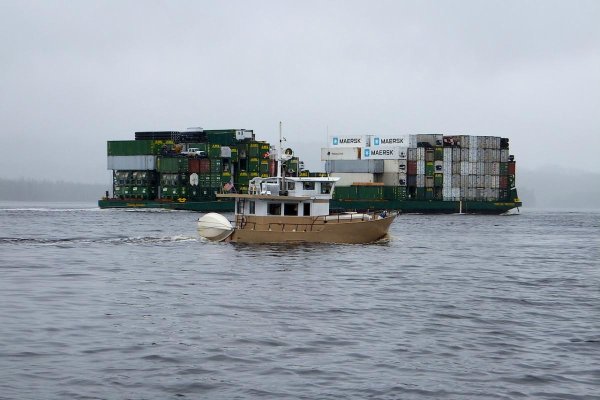robs523
Senior Member
- Joined
- Dec 24, 2014
- Messages
- 103
- Location
- USA
- Vessel Name
- Magnetic North
- Vessel Make
- 1985 Californian 34
Hey everyone, it's been over a year since I started this thread, and in that time, a friend gave me a homemade 20' wooden Glen-L Carolina Dory. I added a motor, have had a blast, and now we're ready to upgrade. It doesn't take long with cold, waterlogged passengers to make a family daytrip get old quickly, and the few hunting trips in the snow I did were a lot less enjoyable than if I had a cabin! Comparing our thoughts now to everything that was said last December, not much has changed. I still plan on doing a lot of fishing, and I still get 6-7 days off every 4 weeks or so. I also still plan on getting a trawler. I've talked to people, cruised the docks, and would probably be embarrassed if I could add up all the hours I've spent online looking at boats since Sep 2014.
So far, I am really leaning towards a 34' Californian. I like the ability to go a little faster with 2 motors for those 1 day fishing trips when we just want to get out and back, and also having the ability to cruise at 7 knots for the 5-6 day or longer family adventures or hunting trips will be great. We really like the deck space compared to something like a CHB tri-cabin. We don't need the aft cabin, and the deck space would really be missed, plus they seem so far out of the water that it looks like it would be more challenging to haul fish on board. I have also looked at a few like the Grand Banks 32 Sedan (FG, wood has been ruled out) but I think the 2nd motor on the Californian would be worth the extra cost in fuel and suit our needs better. I love the usable space all around the boat comapred to a Mainship or similar style, and my wife and I think the flybridge would be worth its weight in gold on those sunny days we occasionally get.
I have found a few possibilities in Seattle and am working with a broker down there to help out and I will do a sea trial and get a professional survey done before purchasing anything. I love the idea of hiring a captain to come up with me but hate the idea of spending $6000 to do it. I'm half tempted to read a Waggoners inside and out as well as a couple books about cruising the inside passage and doing it with a few friends with more experience than me. The adventurous part of me thinks that would be great, the logical side of me thinks it's an insane idea, I haven't decided who to listen to yet Old Deckhand is willing to let me take a look at his boat this weekend, and I'm sure I'll talk his ear off with questions about all of this.
Old Deckhand is willing to let me take a look at his boat this weekend, and I'm sure I'll talk his ear off with questions about all of this.
Any ideas on fishing from trawlers, deck space, obvious things that I'm not seeing, or anything else would be great. I've been reading a lot on the forums here lately and really appreciate the information. It's great to be back, and hopefully I'll be posting pics in a few months. Thanks!
So far, I am really leaning towards a 34' Californian. I like the ability to go a little faster with 2 motors for those 1 day fishing trips when we just want to get out and back, and also having the ability to cruise at 7 knots for the 5-6 day or longer family adventures or hunting trips will be great. We really like the deck space compared to something like a CHB tri-cabin. We don't need the aft cabin, and the deck space would really be missed, plus they seem so far out of the water that it looks like it would be more challenging to haul fish on board. I have also looked at a few like the Grand Banks 32 Sedan (FG, wood has been ruled out) but I think the 2nd motor on the Californian would be worth the extra cost in fuel and suit our needs better. I love the usable space all around the boat comapred to a Mainship or similar style, and my wife and I think the flybridge would be worth its weight in gold on those sunny days we occasionally get.
I have found a few possibilities in Seattle and am working with a broker down there to help out and I will do a sea trial and get a professional survey done before purchasing anything. I love the idea of hiring a captain to come up with me but hate the idea of spending $6000 to do it. I'm half tempted to read a Waggoners inside and out as well as a couple books about cruising the inside passage and doing it with a few friends with more experience than me. The adventurous part of me thinks that would be great, the logical side of me thinks it's an insane idea, I haven't decided who to listen to yet
Any ideas on fishing from trawlers, deck space, obvious things that I'm not seeing, or anything else would be great. I've been reading a lot on the forums here lately and really appreciate the information. It's great to be back, and hopefully I'll be posting pics in a few months. Thanks!


